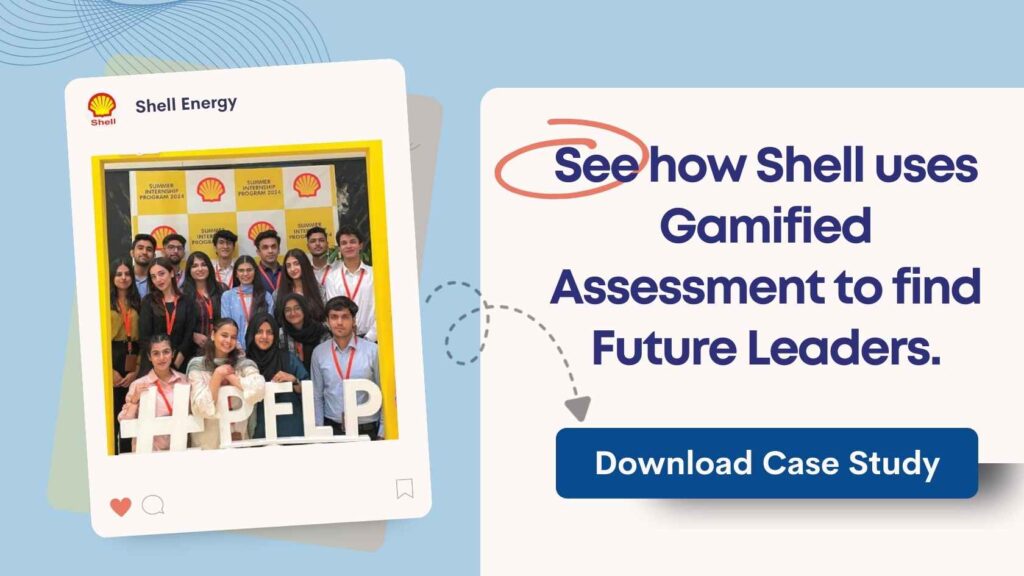This blog explores key future leadership competencies and how leadership development through effective hiring practices can assess them to identify and prepare next-gen managers for 2025 and beyond.
Rapid advances like AI, automation, and digital platforms have transformed how people work, where they work, and what your organization expects from its leaders. To remain competitive long term, you must identify future leadership competencies in your talent. They need to have the mix of skills that will allow your next‑gen managers to not just survive but thrive.
A recent Global Human Capital Trends report shows that while 87% of business leaders say finding the right workplace model is critical, only 24% believe their organizations are very ready to adapt. You need leaders who can handle disruption, inspire innovation, and drive stability amid change.
In this piece, you’ll see the competencies you must assess now to find and develop future‑ready leaders.
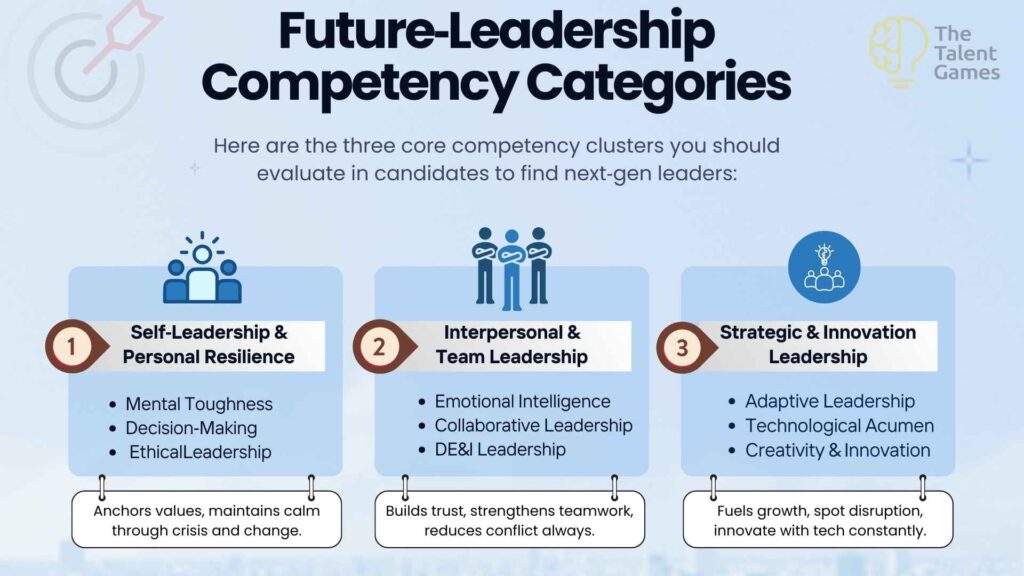
9 Key Future Leadership Competencies You Must Assess
Let’s break down the most important competencies that should be at the top of your hiring radar. If you’re on the hunt for visionary leaders capable of driving change in your organization, these are the core competencies to prioritize:
1. Adaptive Leadership: The Ability to Navigate Change
Adaptive leadership ranks at the very top because when markets shift, tech disrupts, or crises hit, it is those leaders who can change direction fast, learn on the go, and keep the team moving forward who make the difference.
It means having the mindset and skills to reassess priorities, experiment, and refocus under uncertainty. For growth this matters deeply: organisations led by adaptive leaders tend to bounce back faster, innovate more, and stay ahead of competitors.
For example when Satya Nadella became Microsoft CEO he moved the company toward cloud‑first and subscription models, reorganised teams, embraced open source, and transformed Microsoft’s culture. This pivot let Microsoft thrive in the cloud era and become a leader in AI and services.
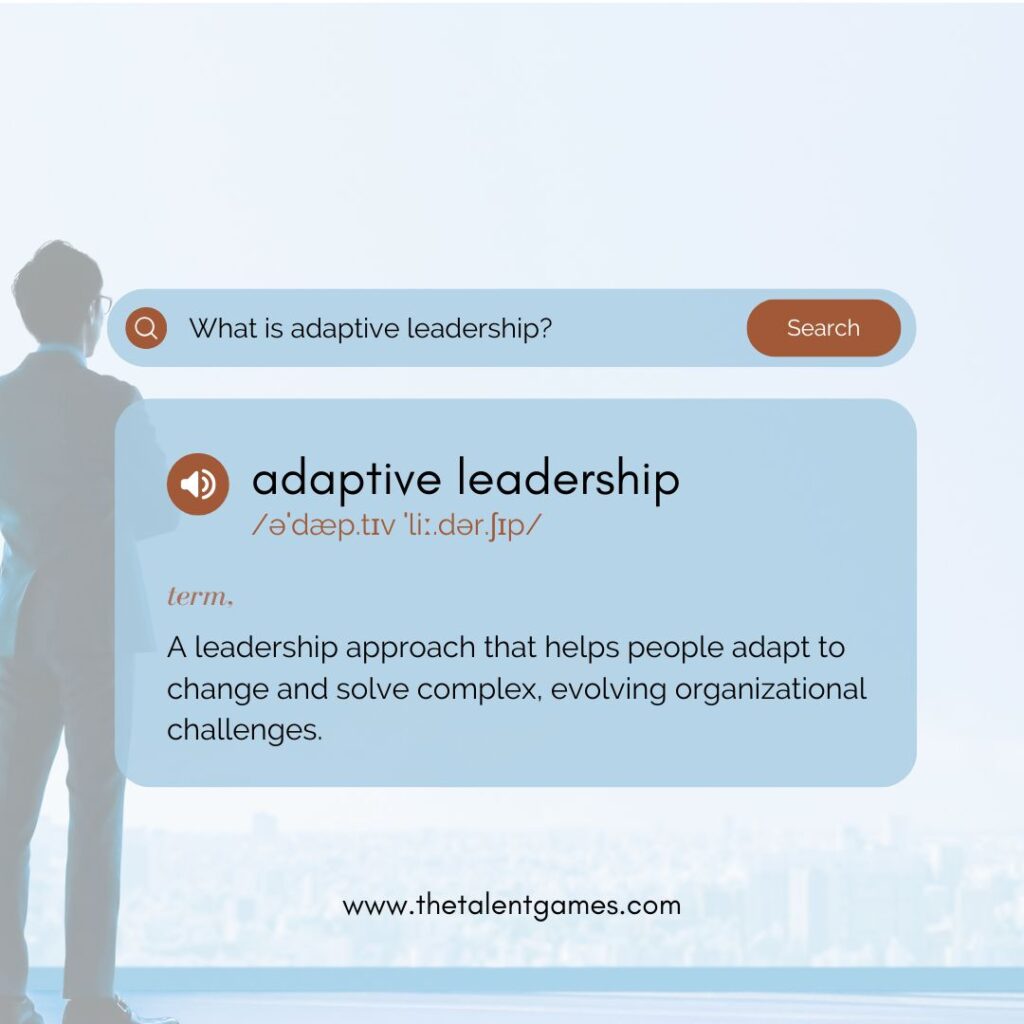
2. Emotional Intelligence: Building Stronger Team Connections
Emotional intelligence should be near the top of your assessment criteria because it directly affects how well a leader can build connection, maintain morale, and drive results, especially when teams are under stress.
It means being aware of one’s own emotions, understanding others’ feelings, and responding in ways that foster trust and cooperation. According to study, EQ accounts for about 58% of success across jobs, and 90% of top performers are strong in emotional intelligence.
Leaders with high EQ help reduce conflict, improve retention, and make team members feel safe to speak up. In remote or hybrid settings, where miscommunication and isolation are real risks, emotionally intelligent leaders spot subtle cues like maybe someone seems disengaged or frustrated and take action early.
We can see this for instance, in Invictus, how Nelson Mandela used empathy, listening, and emotional understanding to unite a divided group, turning mistrust into shared purpose and strong performance.
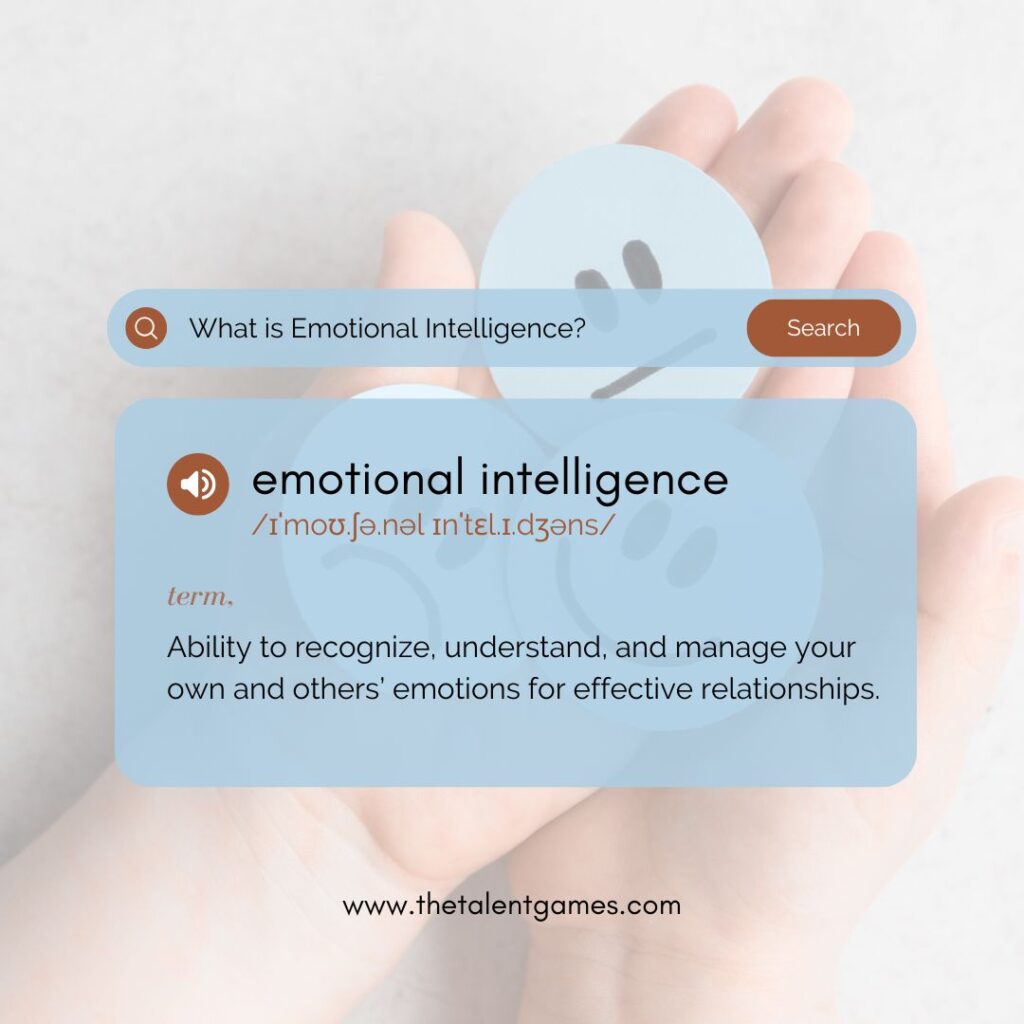
3. Technological Acumen: Leveraging AI and Innovation
The integration of AI and new technologies is fundamentally reshaping every industry. Leaders must not only understand the tools available to them but also drive their teams to leverage these technologies effectively. Technological acumen is one of the future leadership competencies that will distinguish tomorrow’s leaders from today’s.
According to McKinsey & Company’s study, the most successful companies in the next decade will be those led by managers who can bridge the gap between technology and strategy. This means leaders need to understand the potential of emerging technologies like artificial intelligence, machine learning, blockchain, and data analytics, and be able to implement them in ways that provide measurable business outcomes.
Look for candidates who have a solid grasp of these technologies and are comfortable leading tech-driven transformation. These individuals will help steer your company through a tech-dominated future.

4. Diversity and Inclusion Leadership
One of the most pressing leadership challenges today is ensuring that your teams are diverse and inclusive. Companies are now focusing on creating work environments where people from all backgrounds can thrive.
Leaders must be able to lead diverse teams, encourage different perspectives, and create a culture where every employee feels included and valued.
A 2023 Harvard Business Review study found that organizations with diverse leadership teams perform better financially. More than just a social responsibility, inclusivity has become a business imperative. Leaders who understand this and act on it will help create a work culture that attracts top talent from all demographics.
As you assess leadership potential, prioritize candidates who have demonstrated a commitment to diversity and inclusion, both in their work environments and through their personal actions.
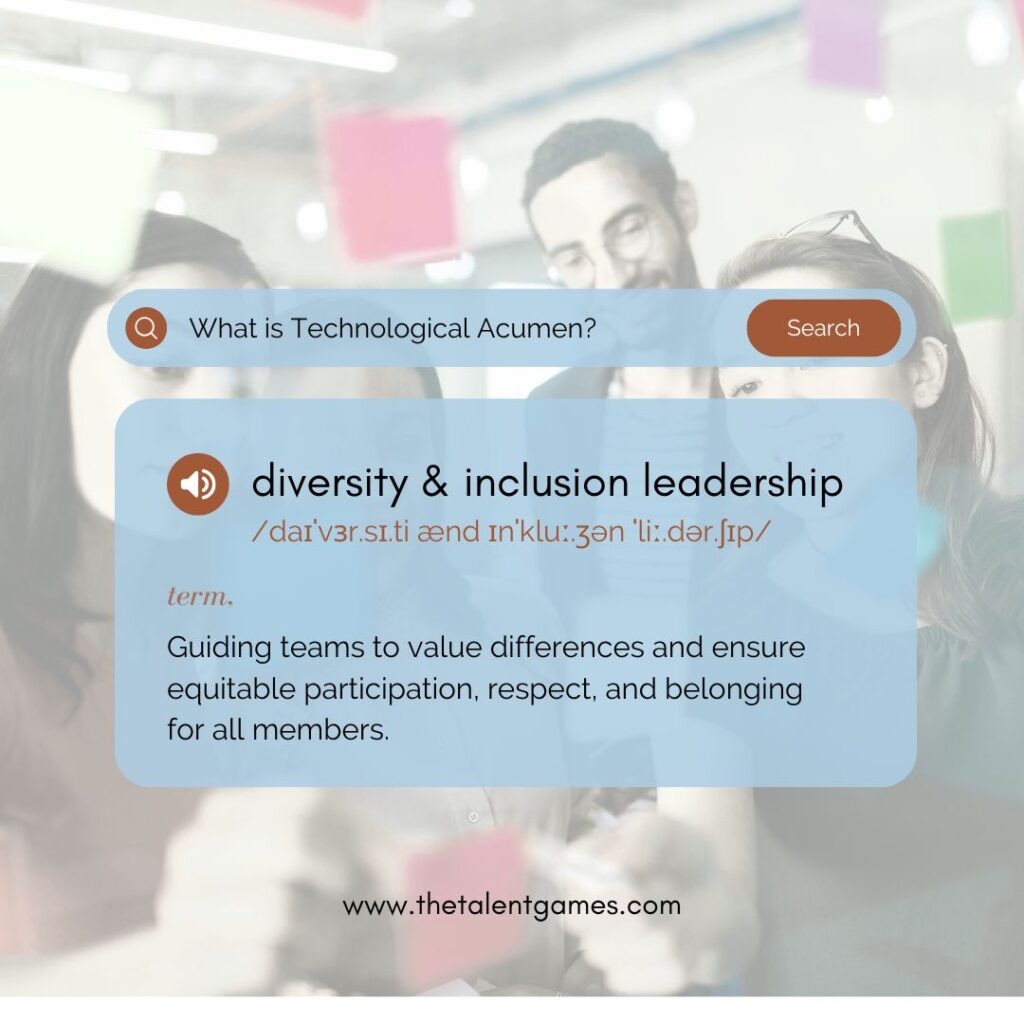
5. Decision-Making in During Uncertainty
During unpredictable markets, economic shifts, and even global crises, the ability to make informed decisions in ambiguity is essential. Leaders must balance risks and opportunities while operating with incomplete information.
Decision-making in these environments requires strong analytical thinking, courage, and a deep understanding of the business’s long-term vision.
As David Russell said: “The hardest thing to learn in life is which bridge to cross and which to burn,” effective leaders, much like in decision-making, know when to take risks and when to tread cautiously. The ability to make tough decisions in uncertain conditions, balancing intuition with data-driven insights, is a competency that distinguishes top leaders.
When identifying candidates, evaluate their ability to thrive in uncertainty. Ask about past situations where they navigated complex decisions with little to no roadmap, yet achieved success.

6. Sustainability and Ethical Leadership: Navigating the Green Economy
Sustainability and Ethical Leadership earn a spot high on your competency list because companies that ignore environmental and moral responsibility risk losing trust, market share, and long‑term performance.
This competency means making choices that serve profit and planet, doing what is right even when the easier path is tempting. Recent research across 420 automotive firms shows that ethical leadership strongly improves sustainability performance (measured by ESG scores) and also boosts financial metrics like Return on Assets and market valuation.
John Mackey and Raj Sisodia in Conscious Capitalism argue that leaders who weave higher purpose into strategy outperform peers over time, because stakeholders like employees, customers, investors, reward brands that show integrity and responsibility.
Candidates who have made decisions with long‑term environmental or societal impact in mind say choosing suppliers that reduce carbon footprint, investing in fair labour, or embedding sustainability goals into product design, are the kinds of leaders who help the organisation win not just now but well into the future.
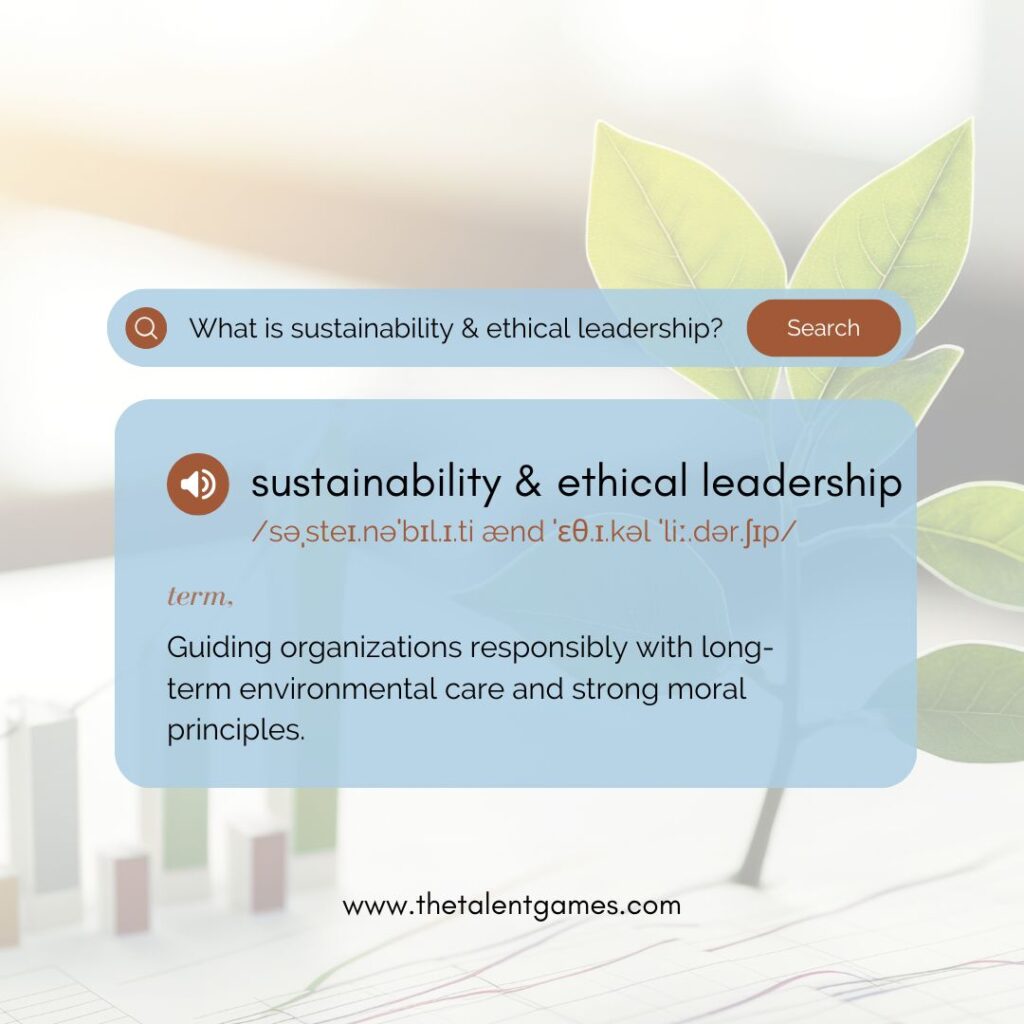
7. Collaborative Leadership to Build High-Performing Teams
In an increasingly interconnected world, no leader can succeed alone. Collaborative leadership is about fostering teamwork, communication, and a culture of sharing knowledge and resources. As organizations become more cross-functional and global, leaders need to break down silos and ensure that teams across the organization can work together seamlessly.
According to the Global Talent Trends report from LinkedIn found that 91% of employees believe that collaborative environments are crucial to productivity. In fact, collaboration is a key predictor of high-performing organizations. Leaders must create environments where collaboration thrives, and teams can solve problems together.
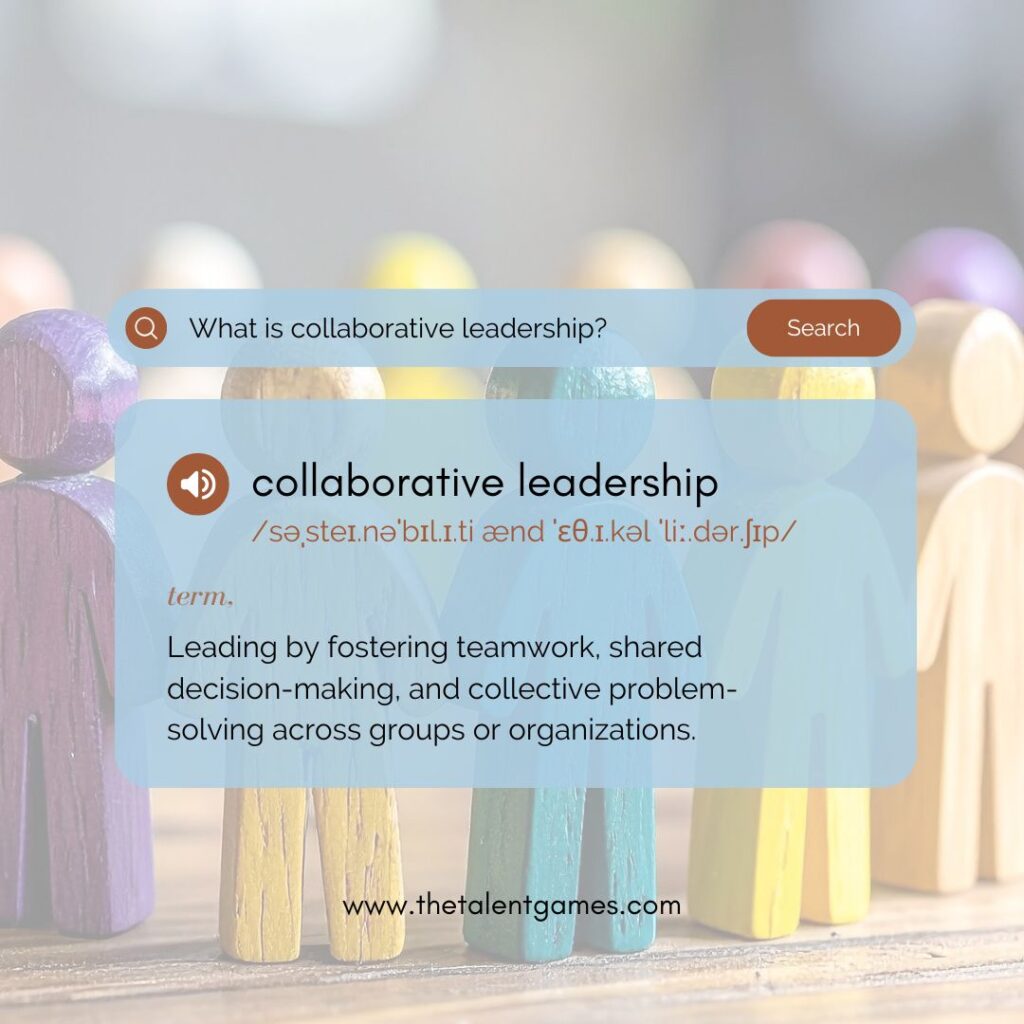
8. Creativity and Innovation to Lead Through New Ideas
The future of leadership is innovation. The most successful leaders will be those who foster creativity and continuously push the boundaries of what is possible. They must encourage new ideas, lead by example, and ensure that their teams feel empowered to innovate without fear of failure.
In The Innovator’s Dilemma, Clayton Christensen discusses how leaders who can drive innovation in their organizations are the ones who achieve sustainable growth. He emphasizes the importance of creating a culture where failure is seen as a stepping stone to success, rather than an obstacle.
As you assess leadership potential, ensure that your candidates have a history of driving innovation, whether through new product development, process improvements, or disruptive thinking.
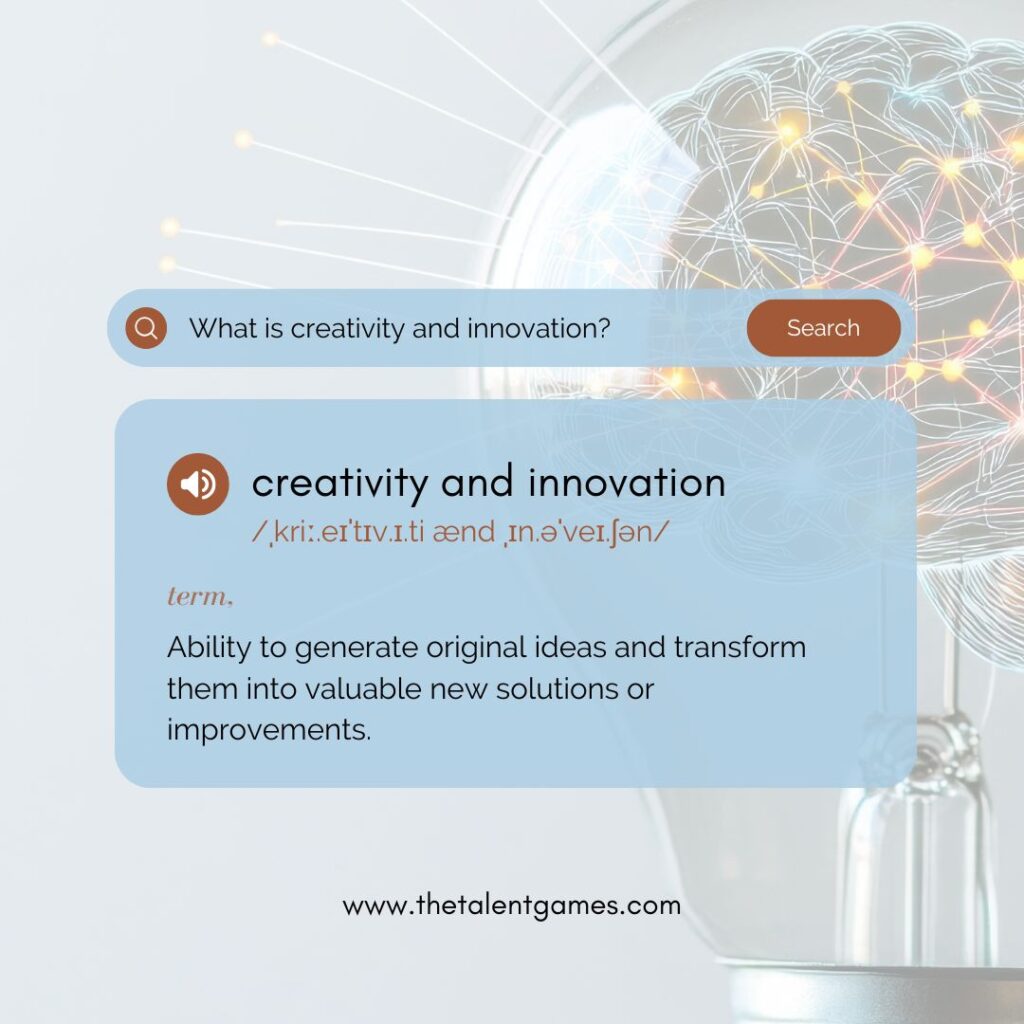
9. Resilience and Mental Toughness to Overcoming Setbacks
The pressure on leaders today is immense, especially in fast-moving industries where the pace of change can feel overwhelming. Resilience is the ability to bounce back from setbacks and remain focused on long-term goals is a key competency for leaders in the future.
Leaders with mental toughness can persevere through crises, maintain focus, and inspire their teams to do the same.
The dialouge from Rocky Balboa, “It’s not about how hard you hit. It’s about how hard you can get hit and keep moving forward,” perfectly embodies the essence of resilient leadership. In today’s business world, your leaders must be able to weather storms and keep pushing toward the vision.
During recruitment, evaluate how candidates have demonstrated resilience, whether in handling personal setbacks or managing organizational crises.
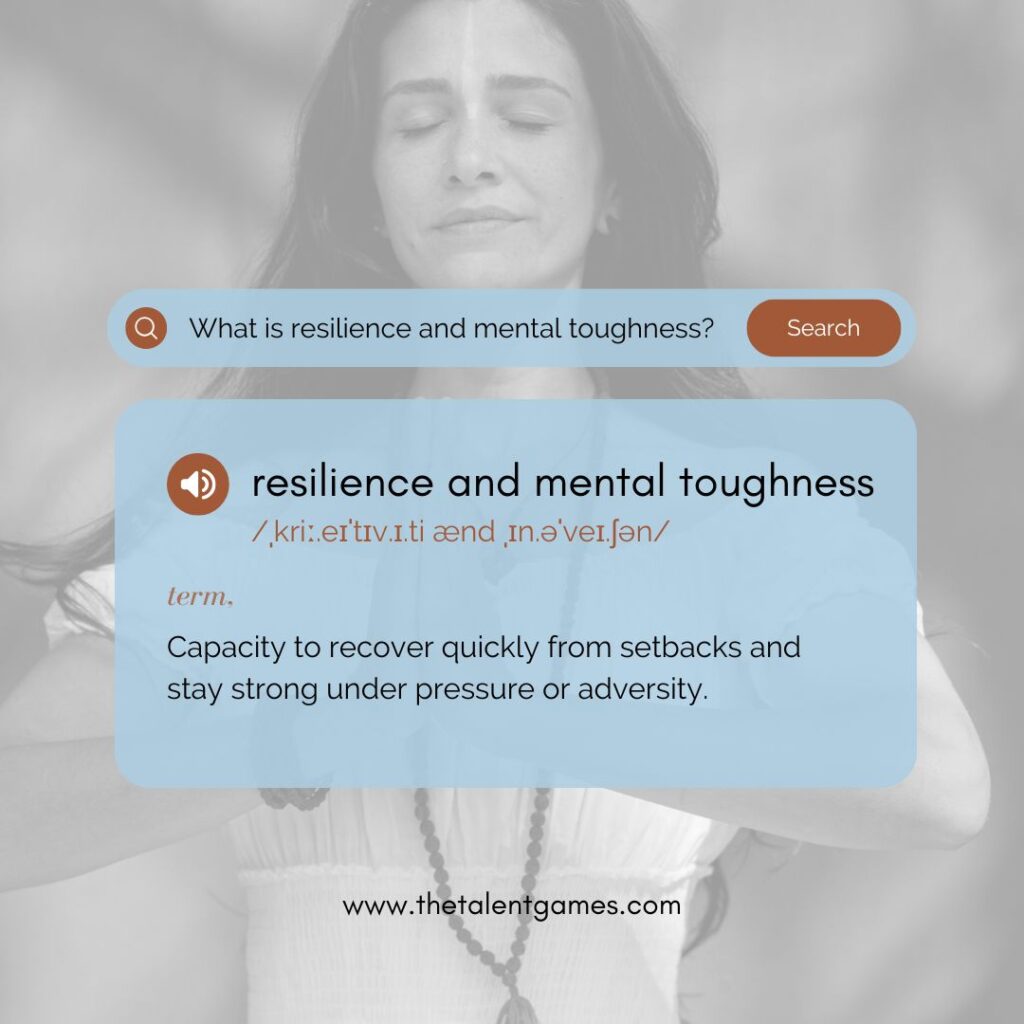
Gamified Leadership Assessments as the Best Way to Identify Top Competencies
Once you’ve pinpointed the key leadership competencies for your next-gen managers, how do you assess them?
Traditional interviews often fail to provide an accurate picture of a candidate’s true abilities under pressure.
This is where gamified leadership assessments, especially gamified situational judgment tests have filled the void for alots of major companies.
They simulate real-world scenarios that challenge candidates to demonstrate their decision-making, adaptability, emotional intelligence, and more.
Benefits of Using Gamified Leadership Assessments to Assess Future Leadership Competencies
Gamified assessments like situational judgment tests, simulations, or interactive challenges bring many advantages when your goal is to evaluate the kinds of future leadership competencies we discussed earlier.
Here are some of the major benefits you’ll gain:
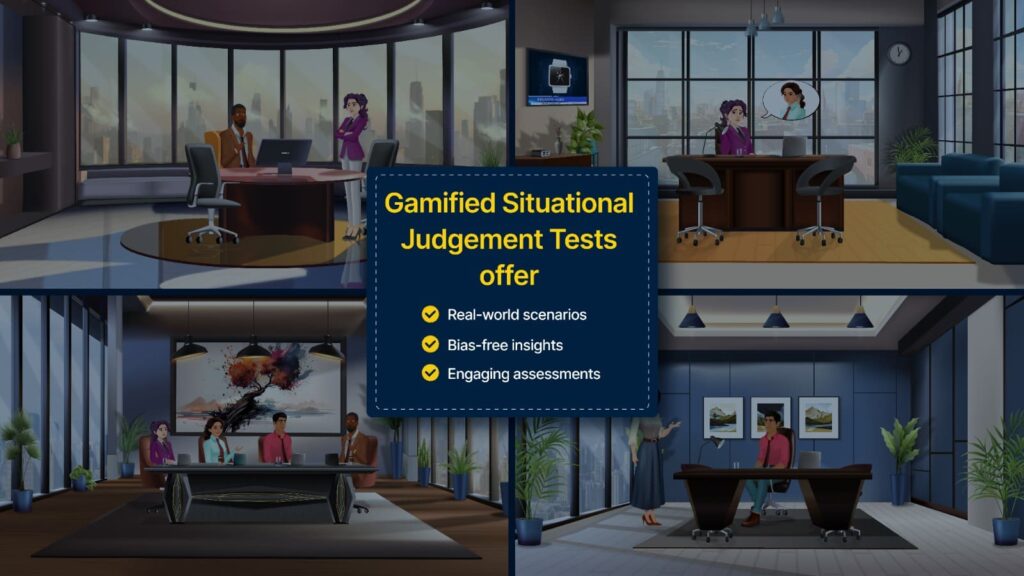
1. More Accurate, Real Behavior Insights
Traditional interviews or self‑reports often reveal what people think they would do; gamified assessments show what they actually do under conditions similar to real work.
You get data on how candidates behave under pressure, how fast they respond, how they solve problems and not just what they say.
2. Higher Engagement & Better Candidate Experience
Candidates find game‑style assessments more interactive and less intimidating than long questionnaires or formal tests.
This increases completion rates, reduces drop‑offs, and leaves a stronger employer brand impression. Gen Z and younger managers especially expect digital‑first, immersive experiences.
3. Reduced Bias & More Fairness
Because gamified leadership assessments rely on structured scenarios and measurable performance rather than impressions or surface‑level traits, they help reduce unconscious bias.
Everyone faces the same challenges, and performance is judged based on outcomes rather than subjective qualities.
This increases completion rates, reduces drop‑offs, and leaves a stronger employer brand impression. Gen Z and younger managers especially expect digital‑first, immersive experiences.
4. Scalability and Efficiency in Hiring
When you have many candidates (for example, campus hiring, management trainee programs, volunteer recruitment, etc.), gamified assessments let you screen at scale without sacrificing depth of evaluation.
You can efficiently filter out those who lack core competencies while preserving candidate experience.
5. Better Predictive Validity and Quality of Hiring Decisions
Gamified tools can correlate more strongly with future on‑the‑job success because they test how people perform in situations (decision‑making, adaptability, emotional intelligence, etc.) rather than only what is on their resume. These assessments tend to predict leadership potential more reliably.
6. Data‑Driven Decision Making & Continuous Improvement
You get rich data about how quickly people make decisions, paths they take in solving challenges, how they manage trade‑offs, their error rates, etc.
That lets you compare candidates, refine your assessment design, and align hiring more closely with the leadership competencies your organization needs.
Final Words:
Leaders that will shape the future aren’t defined only by experience, but by how they respond to complexity, ambiguity, and change.
Just as technology advances, so must the ways we assess leadership potential. Relying on outdated hiring methods risks overlooking the very competencies that tomorrow’s managers need most.
Gamified leadership assessments provide that evolution, revealing how candidates think and act in dynamic scenarios.
The lesson is clear: advancing leadership starts with advancing how we identify and evaluate the talent that will carry organizations forward.


